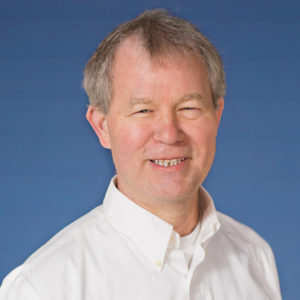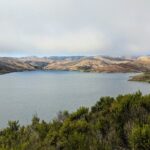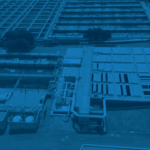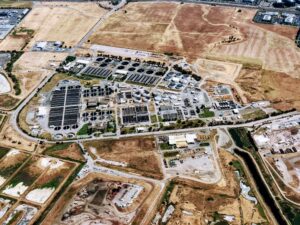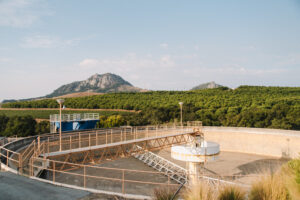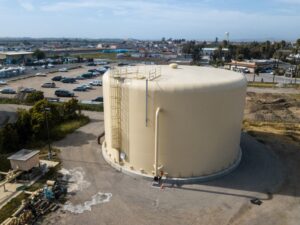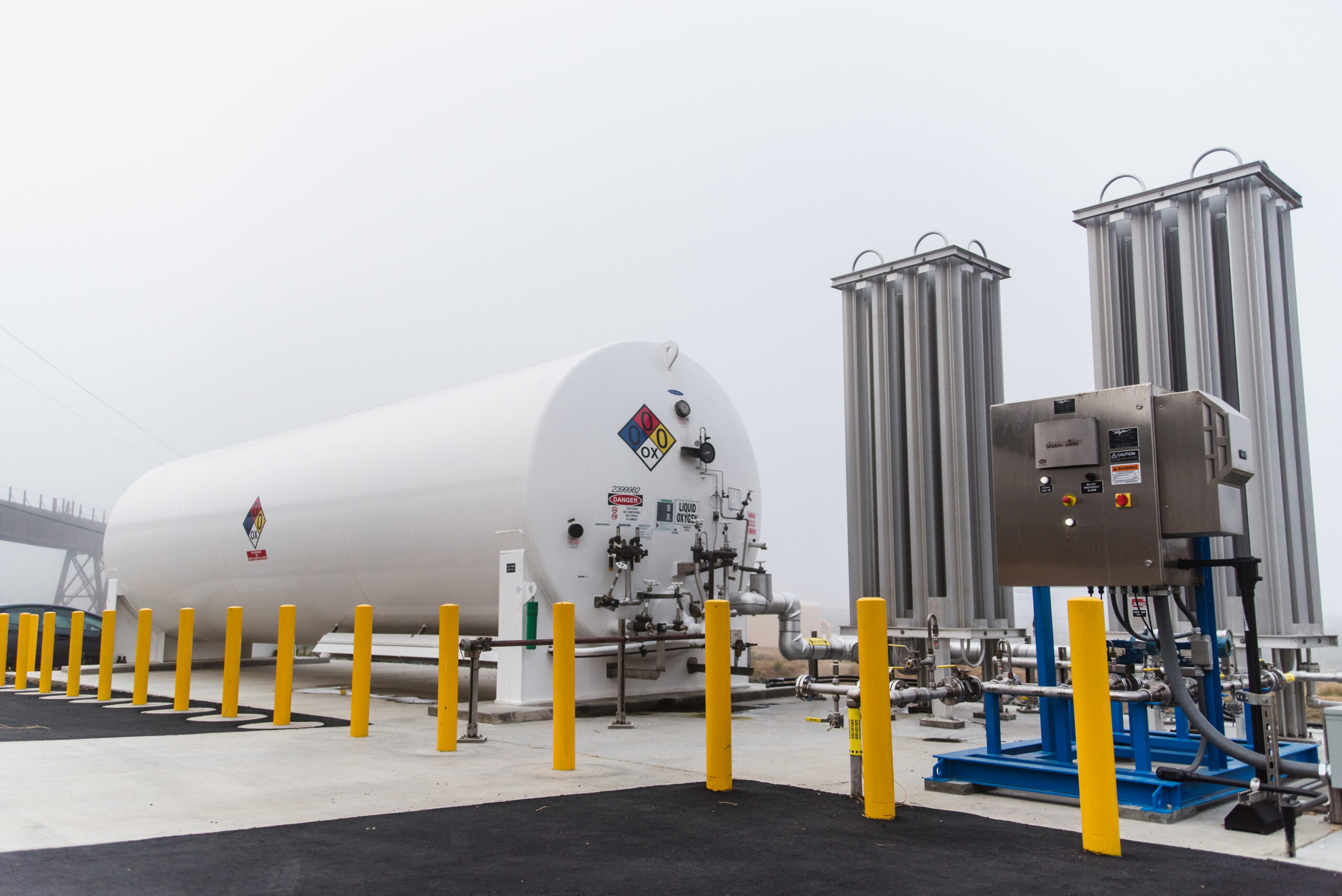
Disinfection byproducts (DBPs) are formed when disinfectants such as chlorine or ozone react with materials naturally present in water to form new chemicals such as trihalomethanes (THMs) or haloacetic acids (HAAs). These DBPs are known carcinogens, regulated by the EPA, and must be kept below certain threshold concentrations in municipal water supplies.
DBPs can be controlled by preventing their formation or removing them after they are formed.
There are three main prevention methods for DBPs:
- Remove the organic precursors before disinfection. Some surface water filtration plants use “enhanced coagulation” to absorb the organic materials onto a coagulant, which is then settled and filtered from the water. Oftentimes there is enough removal to bring DBP concentrations below the limits. However, this can require a lot of the coagulant chemical, which will increase cost and disposal requirements
- Limit the time and concentration of disinfection. This must be balanced by the need to provide adequate disinfection to eliminate all pathogens from the water and is not always possible. In water systems that have a lot of storage it is necessary to make sure that the water in the storage tanks turns over frequently so that water does not age excessively. Providing mixing in the tanks can help minimize DBP formation
- Use alternative disinfectants that don’t form DBPs. While chlorine (usually as liquid sodium hypochlorite) is the most commonly used disinfectant because it is safe, effective and inexpensive, it also is most likely to produce DBPs. Alternate disinfectants such as ozone or chlorine dioxide are more expensive but may also reduce DBP formation by destroying the organic precursors. However, in some cases these disinfectants can produce different DBPs, so they are not always a good solution.
Sometimes it’s better to let DBPs form and remove them later. DBPs can be effectively removed from drinking water using the three best available technologies:
- Granular activated carbon (GAC). GAC is a broad-spectrum adsorbent that removes most organic constituents. It has been proven to effectively remove both HAA and TTHM compounds. While GAC can also remove DBP precursors, the adsorptive capacities and surface attraction forces of activated carbon particles can potentially result in longer media life when primarily removing smaller, pre-formed DBPs rather than larger DBP precursors.
- Air stripping. Air stripping removes volatile constituents by contacting contaminated water with air. Water is supplied at the top of a tower and flows downwards in a film layer across plastic packing media with a high surface area. Clean air is blown from the bottom of the tower to create a counter-current contact between the film of contaminated water and clean air. The volatile DBPs transfer from the water into the air, which is discharged from the top of the tower. Air stripping has been proven to be one of the most effective technologies in removal of brominated- and chlorinated-THMs (typically 30 to 95 percent, depending on the specific DBP).
- Tank mixing/spray aeration. Water storage tank mixing promotes reduced water age through circulation and homogenization of the water, minimizing thermal and chemical stratification that promotes DBP formation. DBP removal can be enhanced by circulating the water through spray nozzles into the tank. This works similar to air stripping – the water comes in contact with air to allow the volatile DBPs to transfer to the air. The effect can be enhanced by blower air through the vapor space of the tank. While this method is less effective than an air stripper, in some cases it will provide enough removal to meet regulations.
- Active mixing typically involves powered mixing apparatuses that continuously stir water from the surface and/or the bottom of the tank. While mixing at the bottom of the tank provides the bulk of minimizing stratifications within the tank, mixing at the water surface introduces oxygen at the water surface to promote volatilization and transfer of TTHMs at the water-air interface. Air containing volatilized TTHMs is subsequently ventilated through roof penetrations. Active mixing has proven to be a robust solution to minimizing chlorinated THM occurrence.
- Passive mixing typically involves mechanical configurations of the tank inlets and outlets such as installing a “duckbill” mixing manifold along the floor of the tank to force inlet water into “jets” that promote mixing. However, mixing would primarily occur during tank filling.
GAC and Air Stripping are the two most popular technologies for removing DBPs from drinking water. The table below summarizes the advantages and disadvantages of each when treating drinking water.
GAC and Air Stripping Technology Comparison Matrix
| Topic | GAC | Air Stripping |
|---|---|---|
| Disinfection | Downstream chlorination required to inactivate pathogens and viruses entering the distribution system. | Downstream chlorination required to boost disinfectant residual removed by air stripping tower. |
| Corrosion Control | No anticipated impacts. | No anticipated impacts. |
| Media Life | Due to additional adsorptive capacity required to remove both organic precursors and DBPs, media life will typically last between 6 to 12 months (can be confirmed through pilot testing). | Typically lasts for the useable life of the air stripping tower (approximately 20 to 20 years). Lifetime warranty for media to be provided by equipment manufacturer. |
| Capital Cost | System consists of steel piping, pressure vessels, and valving, capital cost is typically higher. | Tower and blowers consists of fiberglass reinforced plastic construction with a small footprint, capital cost is typically lower. |
| O&M Cost | Annual cost of activated carbon replacement is typically more expensive than operation costs of air stripping blowers. | Annual operation costs of air stripping tower booster pumps and blowers is typically less expensive than annual cost of activated carbon replacement. |
| Co-Removal of Other Constituents | Broad-spectrum adsorbent that preferentially removes both HAA and THM precursors and formed compounds provides excellent limitation of additional DNP formation downstream of treatment. | Selective treatment that removes only formed THM compounds (preferentially more heavily chlorinated THMs), provides acceptable limitation of additional DBP formation downstream of treatment. |
| Operational Considerations | Requires additional backwash storage tank and duplex booster pump station to facilitate backwash of each vessel following media replacement. Spent backwash water would be recycled to minimize costs of purchasing large volumes of additional water from KCCSD. | Relatively simple operation that requires periodic maintenance of blowers and flow control system. No media replacement or backwashing required. |
